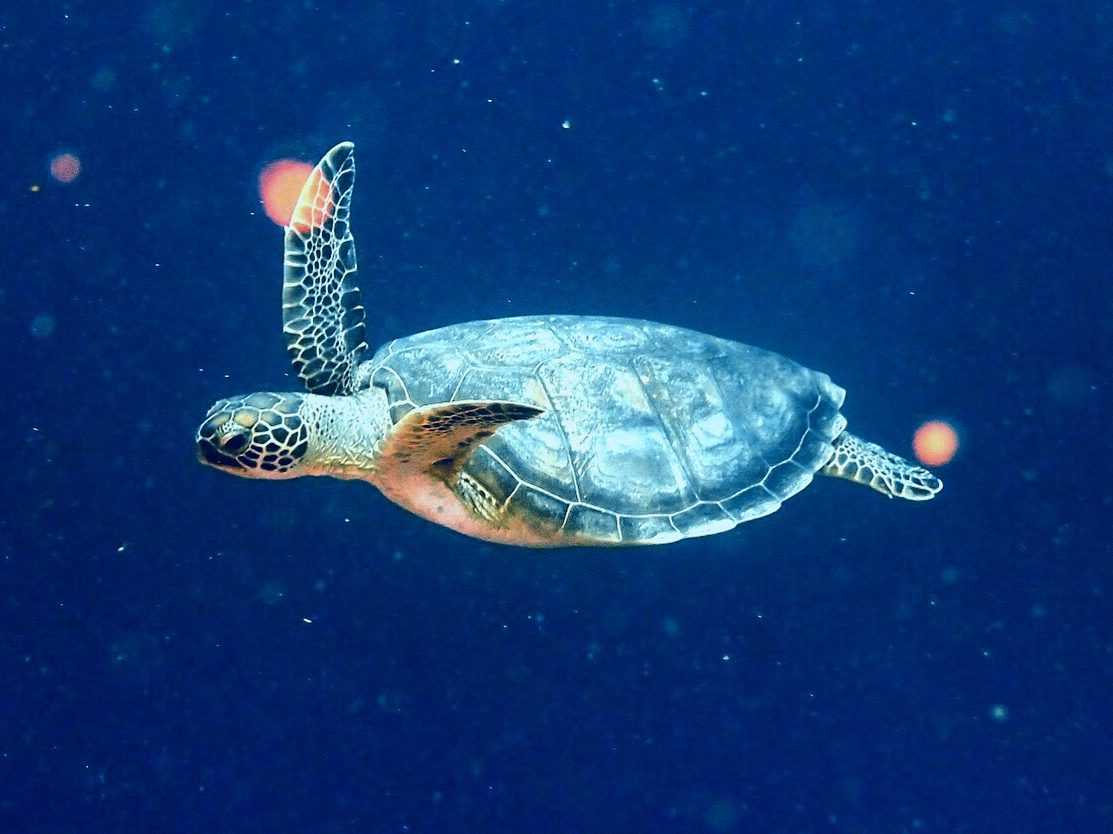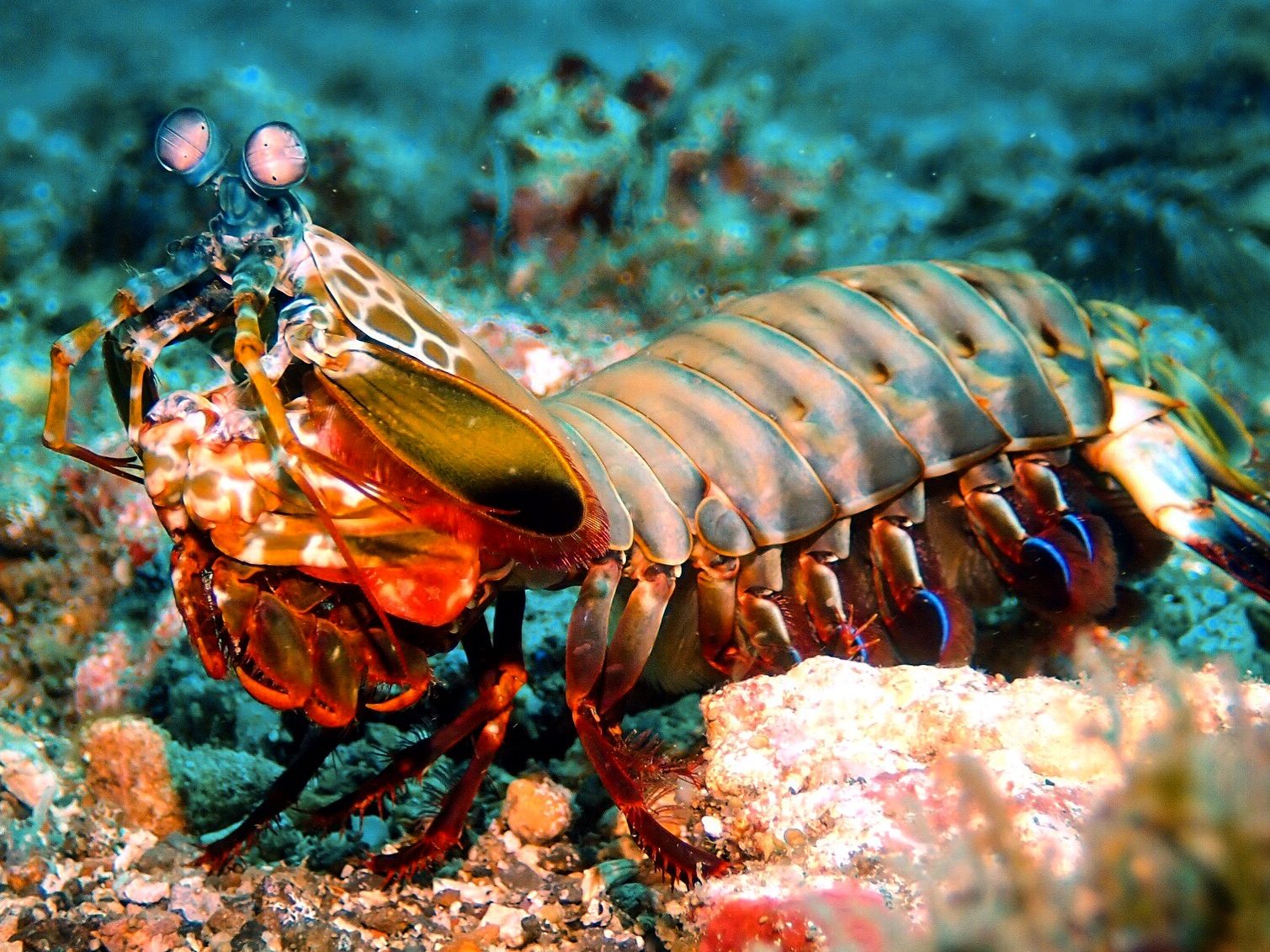
 |
| The island of Sulawesi in Indonesia (Image source: Wikipedia) |
A little while back, our friends Tanja and Stefan, whom we met in Palau, contacted us to see if we wanted to join them on their diving holiday. Having worked in the Maldives for the past few years, they had met many diving enthusiasts who had been to some of the top diving spots around the world, and a place that none of the four of us had been to yet was this area of Indonesia.
This area is known for its diversity in underwater scenery. To the west of Manado is Bunaken National Park, habitat to 390 species of coral. To the east is the Lembeh Strait, often referred to as the muck diving capital of the world. We would work two very different dive trips into one, and spend a week in each place.
 |
| Manado, Sulawesi, and the surrounding islands. (Image source: Google) |
Fletch and I were at the airport in Singapore and had just passed up a breakfast of eggs in favor of dim sum. The dumplings were immensely satisfying. As we wandered over to the gate that would take us on our final flight to Manado, we joked that we should have field trip t-shirts for the four of us. Fletch was only halfway joking. Then we passed a store front with a big sale on loud, colorful, “I ♥ SG” t-shirts, that just screamed tourist. Perfect. The price was well worth the laugh. We meant to change into them before finding Stefan and Tanja, but ended up running into them just outside a candy shop. We reunited with hugs, our first time seeing each other since two years previously in Fiji, and then made our way to the gate where we presented them with the gifts. They enjoyed the joke, and the four of us wore matching “I ♥ SG” shirts all the way to Manado.
For the record, wearing matching shirts had some added perks. We breezed through customs and immigration in no time at all. Fletch went first, and the immigration official had enough of a sense of humor to ask Fletch, “You haven’t washed that yet, have you?” Fletch was asked all the typical questions, and then it was my turn. “Nice shirt.” And he waved me through without any further questions. Tanja and Stefan were waved through just as quickly. From now on, traveling in matching shirts may have to become a thing.
A whole team of jovial Indonesian men about my size were waiting for us at the exit. They watched our bags for us and showed us where to buy SIM cards for our phones. Then we loaded into a small minivan, so small that our minimal amount of luggage (minimal considering we had full sets of dive gear anyway) had to ride in the truck behind us, and drove to Thalassa Dive Resort. The landscape and scenery out the window was very much like the Philippines. Everything was lush and green, mostly overgrown, as if nature was slowly trying to reclaim any attempts at development over the past few years. Living conditions were largely in the form of tin shacks. Scooters outnumbered actual vehicles, and chickens running across the road were aplenty. The city had looked congested and run down flying over. We must have missed the heart of the chaos on our drive to the resort, because everything here felt isolated and quiet, and mostly like we were in the middle of a jungle with a house scattered here and there.
| Pool at Thalassa Dive Resort |
| Walkway up the hill to the bungalows at Thalassa Dive Resort. |
We arrived at the resort, and were shown into the open air dining/common area along with an older German couple. The place had a comfortable, homey feel despite being a little run down. That’s usually how places in the tropics feel that are older than a year or two, a little under kept, because the constant wear and tear from the sun, and humidity, and saltwater, and a rainy season or two, is too much to keep up with.
| Bungalow at Thalassa Dive Resort |
Our orientation included a briefing on the resort’s environmental efforts. We wouldn’t find any plastic bags, or straws or water bottles. This made me incredibly happy. Some of the worst plastic pollution in the world comes from this area. It’s nice to see places finally waking up and trying to fix the problem. We were served welcome juices with bamboo straws made by local village kids. The dining area and mini fridges in each of the rooms were stocked with pitchers of drinking water. The resort also sold reusable water bottles with their logo, incase you hadn’t brought your own. I never leave the house without mine. Apparently that’s a Colorado thing.
| The perfect sunset viewing spot. |
Fletch, having been to Bali, commented on the difference in landscape. Apparently in Bali they take great pride in their landscaping and gardening. Everything outside is immaculate. Here, everything was just left to grow, leaving us in a lush, tropical jungle.
| Fountain overgrown with moss. |
The resort had a resident dog, Nolan, who was very fond of his ball, and would drop it on you, all covered in slobber, if he wanted to play. There were also a mama cat and her kitten, both teeny tiny little things. I would have assumed that Mama herself was a kitten had it not been for her mini-me trailing her everywhere she went.
| The kitten liked to nap on Fletch’s lap in the mornings. |
The highlight of the resort was the food. Our price included full board and they fed us like kings. Sometimes there would be a buffet for everyone, with four or five fresh curry or vegetable dishes and rice. Sometimes, when there weren’t many people around, we would be served at the table, family style. Most of the food was vegetarian, with usually one meat dish. I already had more than enough food to feast on, but the kitchen, feeling sorry that I couldn’t eat the one meat dish, would always cook me up an additional plate of something vegetarian, usually tofu or tempeh. I have always loved tempeh, but it is surprisingly hard to find. I’m loving eating it everyday here. In fact, I had to look it up and apparently it originates from Indonesia, so that explains a lot. Between the vegetables and the tempeh, I could happily live on the food here. I don’t think I’ve been so happy with the local food since Thailand.
For breakfast, there was an omelette station and an abundance of fresh fruit, the only two foods I ever really desire in the mornings. I was thrilled to find mangosteen again, something I have missed since Thailand, and even got to try something new called snake fruit. It is about the size of a large avocado, the skin looks like a brown snakeskin, although it is a bit more prickly. The inside is segmented and looks just like garlic, only much larger. It also crunches about the same as garlic. The taste however, is somewhere between açaí and an asian pear maybe? It is difficult to describe. Long story short, I’m about as happy as happy gets, food wise.
We were told that the dive shop did a lot of programs for training the local boys which was nice to hear. Most places where we have lived and worked haven’t trusted to put the time and effort into locals, believing that they would just leave to go work elsewhere after their training was complete. It was encouraging to hear that a place as eco-conscientious as this one was passing their knowledge onto the community. (Although we did later find out that the boys were only trained to Rescue Diver level, for exactly the reason I just mentioned, which put a damper on the whole idea of the program).
| The Dive Shop |
The staff at the resort were all gems. The first morning I asked where I might find coconut oil. It’s the best thing to keep the salt water from ruining your hair while diving. One of the chefs came out of the kitchen with a bottle of coconut oil that he had made himself, and gave me a drop on the palm of my hand. He asked if I would need it every day, to which I replied yes. He kindly offered to make me a little bottle. Sure enough, later on that day when we went back down to the dining area, he presented me with a little bottle of home-made coconut oil, and boy did it smell lovely.
On the second day, we asked about getting a cab to go into town to buy some beers. The guy who arranged all the activities, Herman, informed us that it would cost us so many thousands of rupiah (the Indonesian currency) per person. With an exchange rate of 14,000 rupiah to 1 US dollar, every price tag initially sounded outrageous, and my brain had trouble converting such large numbers quickly. Tanja pulled out the calculator and discovered that the transport would cost $.75 per person. Apparently not wanting us to front such a large bill, Herman then offered to just drive us himself. I believe what was in it for him was showing off his cool new car, a cute little Suzuki that looked like a red SUV that had been squished down to the size of a Smart car. It was a very nice car compared to the other vehicles driving around Manado.
The trip to town provided us with a closer look at Manado. We drove down a fancy new paved road, with two lanes of traffic going in each direction. To the right was the shoreline, and to the left was a community of tin shack houses, with barely enough room to walk in between. The ground and bases of all the tin shacks were muddy from a recent flood.
The roads had numerous blue micro buses bumbling around in every direction. Apparently these were the public transport/taxi service. Just flag one down, pay the $.75, and tell it where you wanted to go. For that reason, none of the blue cubes meandering around had a set route, and Herman was constantly stopping to allow the three in front of us to make u-turns around each other on the already too-narrow roads.
The grocery store was much nicer than I had expected given the state of the living conditions, and about the size of an American convenience store. There was a nice selection of seasonal produce, with some more mangosteen that I couldn’t pass up. There were also a lot of very unnatural looking packaged goods, and some random household odds and ends on the far side. The beer shelf had 5 beers available. So much for making a trip into town to stock up on alcohol. It turns out that finding liquor in a predominately Islamic nation is a difficult task.
Despite the whole of Indonesia being 87% Islamic, the northern part of Sulawesi is predominately Protestant. Manado is even called The City of 1000 Churches. We drove by a particularly nice church on our way back to the resort, which was grand and clean compared to the rest of the surroundings, painted crisp white with red brick accents. As we drove past, Herman pointed out his own house right next door, a clean and modern, painted, brick house next to a few more of the same, that looked a good deal nicer than the rest of the homes we had driven past. We teased Herman that he was rich to have such a nice car, and such a nice house. His parents, who still lived with him, must be very proud.







